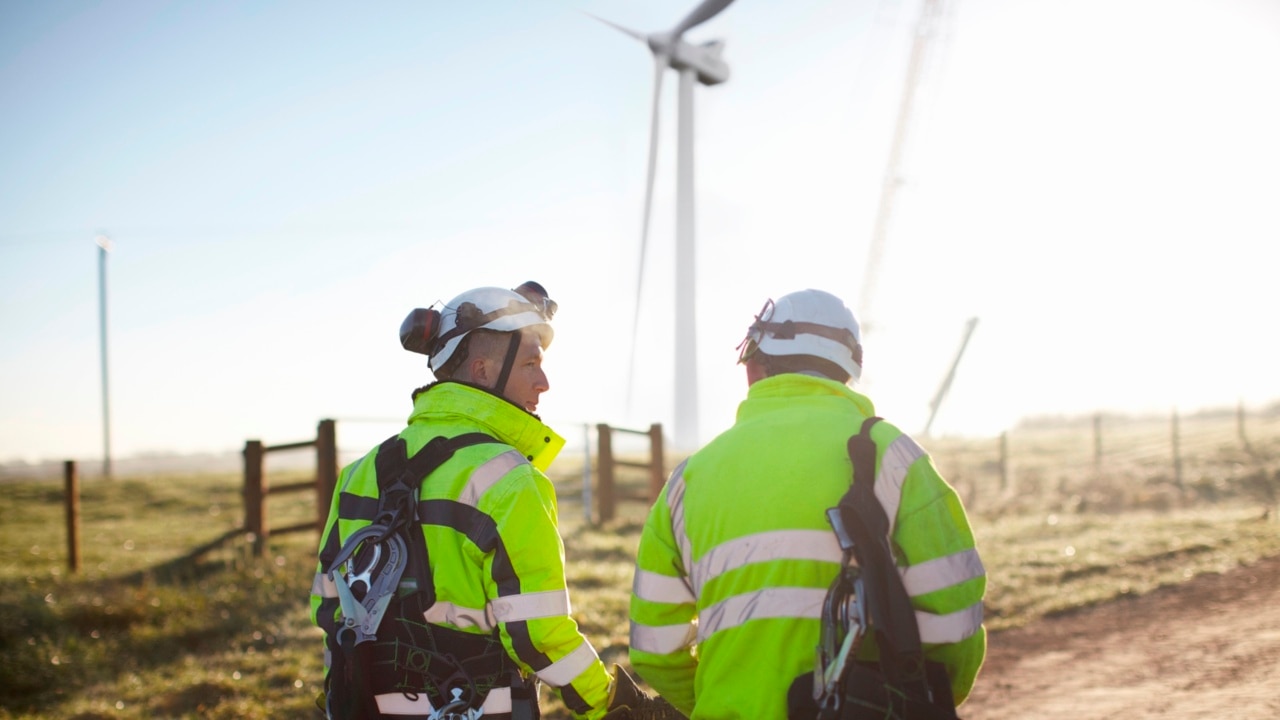Australia’s largest renewable energy developers jockey for prime NSW spot
Australia’s largest renewable energy developers have sought permits to build large-scale projects in a sparsely populated part of NSW as they seek to overcome prohibitive planning laws.

The nation’s largest renewable energy developers have sought permits to build large-scale developments in a sparsely populated part of NSW as they seek to overcome prohibitive planning laws.
The jockeying to establish developments within the South West Renewable Energy Zone – one of six areas where NSW plans to concentrate large-scale zero-emission projects so as to avoid unnecessary transmission builds – underscores how planning requirements have emerged as a bottleneck to the nation’s energy transition.
Developers insist NSW must either tweak its planning laws – so onerous that they allow objections from landowners who may one day construct a dwelling on their property – or its lofty transition goals.
In a bid to overcome the prospect of prolonged delays, all the largest developers – Neoen, Origin Energy, Acciona Energia, Squadron Energy and Iberdrola – have zeroed in on the South West REZ, stretching from Murrumbidgee in the east to Buronga in the west.
“There is a game of musical chairs happening right now. Every developer is trying to get access to that REZ,” one senior industry source said. “The wind resource is great and there aren’t many people out there so the possibilities for objections are limited.
“The biggest problem is transmission. It isn’t big enough to support all the developments that want to be built.”
The South West REZ will be carried by the $3.3bn 500KV HumeLink, primarily built to carry the electricity produced by Snowy Hydro. With line constraints, the South West REZ will house about 2.5 gigawatts of new renewable energy projects, much smaller than other REZs.
NSW is expected to determine which projects it intends to support for the South West REZ by the end of the year, with Origin seen as a heavy favourite. Origin earlier this year purchased the 1.5GW Yanco Delta wind farm earmarked for the South West REZ. The Yanco Delta wind farm is one of the few onshore wind farms to have secured planning permission in NSW.
If Origin secures approval to join the South West REZ as expected, the area will have limited space for other projects despite the ample renewable resources available and limited public opposition in contrast to the other REZ.
NSW’s proposed Central West REZ, for example, has been earmarked for 14GW of new renewable energy generation and storage projects.
However, the South West REZ has limited capacity to be expanded amid vocal opposition to the HumeLink transmission line, although industry sources said it would eventually get built.
“HumeLink will connect Snowy to the grid, a government-backed project,” a second industry source said.
“Transmission lines are difficult to build, but if there is one that will get built then it will be HumeLink.”
The allure of the region contrasts significantly with the so-called New England REZ, where nearly all developers insist new projects will be prohibitively difficult to secure social licence and therefore planning approval.
The New England REZ has been earmarked to house 8GW of renewables and batteries, but large swathes of the region – which has large Nationals representation – have signalled their opposition to onshore wind and solar projects, a stance that is likely to prolong any planning applications submitted by developers.
Delays or even suspension of developments in the New England REZ will be a major blow to NSW’s and Australia’s transition goals.
The federal Labor government has set an ambitious goal of having renewables generate more than 80 per cent of the country’s electricity by 2030. The nation is well behind schedule in reaching that target.
NSW is particularly sluggish in its aim to reach its target. The state earlier this year was forced to strike a deal to keep open its largest coal power station, Origin Energy’s Eraring, for up to four years longer than scheduled.
BloombergNEF, a research agency, on Wednesday became the latest to sound the alarm on the pace of building new renewable energy.
“The lacklustre build of renewables is causing problems on the grid, for which they are increasingly curtailed. Ancillary services costs to maintain system security have gradually risen and the realised prices that wind and solar receive from the energy market are now considerably lower than the average power price,” BloombergNEF said.





To join the conversation, please log in. Don't have an account? Register
Join the conversation, you are commenting as Logout